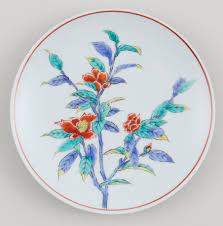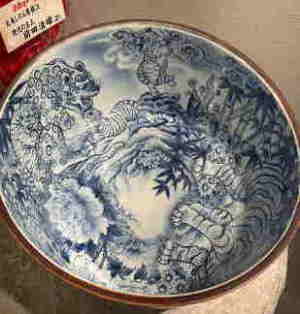item detail
ARITA ware
 The Arita porcelain is a generic term for porcelain burned in Arita-cho,
Saga around. The Arita porcelain is a hard and strong, in white porcelain
with a transparent feeling, bright colors such as red, yellow, gold and
indigo blue's is given delicately.The beginning of the Edo era, and it
was found in the Arita porcelain stone as a raw material for the porcelain
be laid up Lee of the Korean potter in 1616. And they was successful in
the production of porcelain for the first time in the country.During the
late 18th century from the late 17th century, Arita porcelain was shipped
to Japan. It has also been exported to many foreign countries consisting
mainly of Europe.As a result, It became famous.However, by the shipment
has been made from Imari port, rather than the name to say Arita, it was
called Imari. It is now called Arita porcelain produced in the Arita around
now.And, Arita porcelain has been loved by many fans pottery.
The Arita porcelain is a generic term for porcelain burned in Arita-cho,
Saga around. The Arita porcelain is a hard and strong, in white porcelain
with a transparent feeling, bright colors such as red, yellow, gold and
indigo blue's is given delicately.The beginning of the Edo era, and it
was found in the Arita porcelain stone as a raw material for the porcelain
be laid up Lee of the Korean potter in 1616. And they was successful in
the production of porcelain for the first time in the country.During the
late 18th century from the late 17th century, Arita porcelain was shipped
to Japan. It has also been exported to many foreign countries consisting
mainly of Europe.As a result, It became famous.However, by the shipment
has been made from Imari port, rather than the name to say Arita, it was
called Imari. It is now called Arita porcelain produced in the Arita around
now.And, Arita porcelain has been loved by many fans pottery. ARITA Sometuke ware

"Dyeing" is the process of painting the surface of unglazed pottery
with a cobalt-based pigment called underpainting before glazing. After
painting, the piece is glazed and fired at 1300 degrees to complete the
piece. It is also called underglaze because there is a picture under the
glaze.
KUTANI ware

The origin of the five spectacular Kutani colors
At the upper reaches of the Daishouji River,deep in the mountains,
there was once a village called Kutani.
A stone monument bearing the inscription “Ko-Kutani kiln ruins” stands quietly in a clearing.
It marks the spot where the Daishoji Clan(a branch of the Kaga Clan)
established a kiln in about 1655,to make use of the local porcelain stone.
and became the foundation for Japanese colored porcelain ware.
Rich overglaze colors applied with fluid brushwork- green,yellow,red,purple and blue –
give Kutani porcelain its characteristic beauty.
However,only half a century later the kiln was abandoned for reasons thatnobody knows.
About 100 years later,
Kutani porcelain was revived under the patronage of the Kaga clan.
Painter Profeel

Shinobu Ooki
As a representative Meister of Yokohama City, he collaborates with companies and local governments and creates commemorative items.
I have been active since 1992 as Japan's first pet ceramic artist.